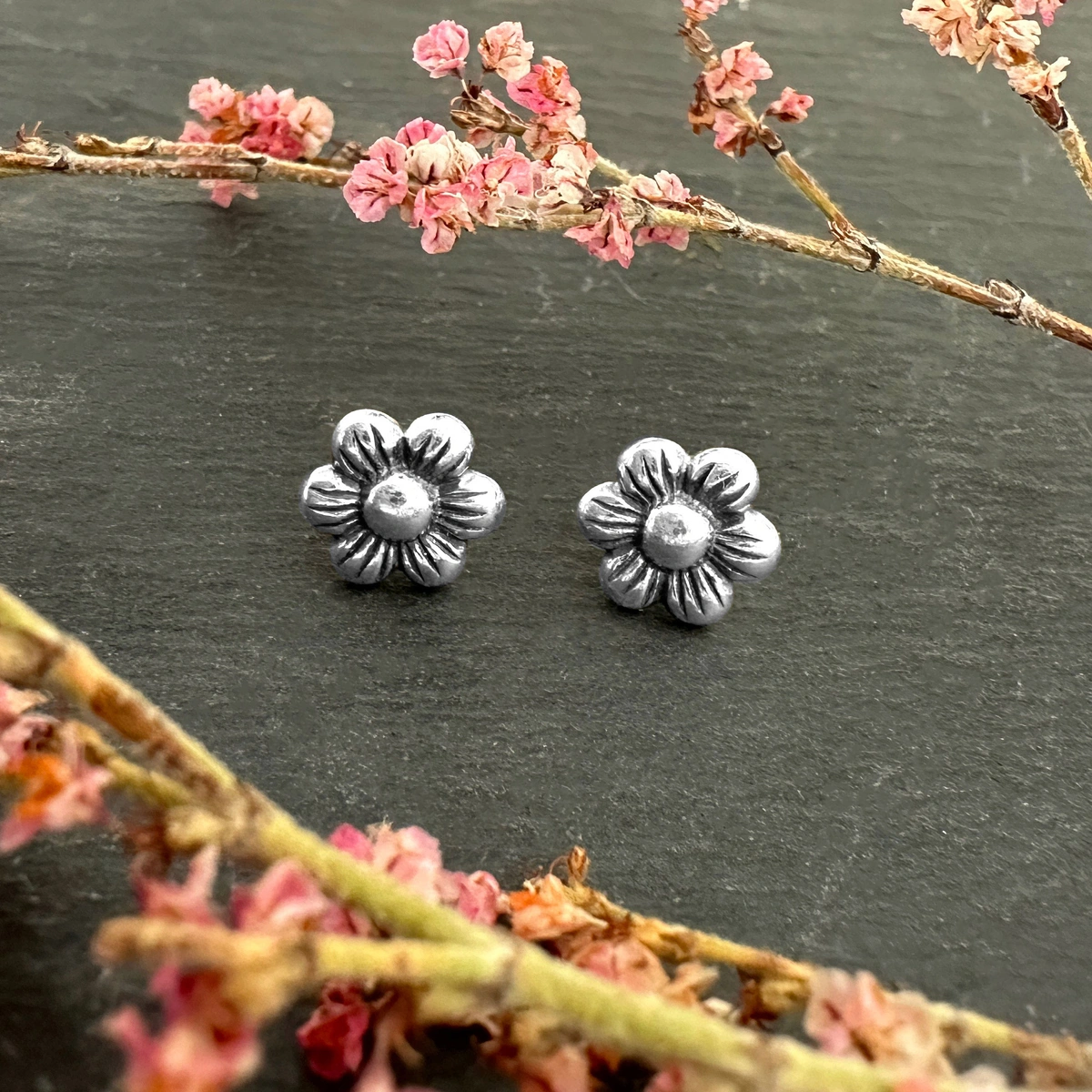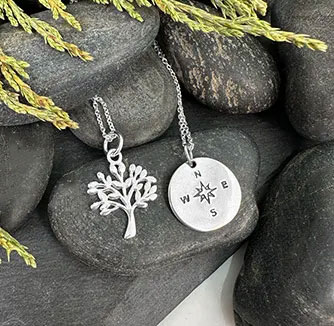Ready to sell jewelry is a quick and easy addition to your retail store or boutique. Jewelry is a popular purchase and can be a high margin item. Learn more about how to stock jewelry in your store with wholesale ready to sell jewelry.
Are you a new retail store owner looking for wholesale jewelry to sell in your shop? Or maybe you are an experienced small business owner looking for new merchandise to spice up your inventory. Adding jewelry to your product selection can be overwhelming. Shop owners are busy. It is one more thing to learn about. And it is hard to know which jewelry vendors you can trust. We’ll answer all your questions about how to buy wholesale jewelry for resale here.
How to Choose a Wholesale Jewelry Supplier
Jewelry is a tricky product line. Retailers worry about being scammed. You don’t want to buy jewelry from just anyone. It is important to find sources with history in the industry. You do not want to stock cheap, fake jewelry that would damage your customer relationships.
Here are our top 3 tips for choosing a jewelry vendor you can trust:
1. Research who they are.
Reputable wholesale jewelry suppliers will have plenty of information on their websites in the About Us section. Look for established companies that have been in business for many years. The business location, ownership, and contact information should all be clearly disclosed. Know exactly who you are dealing with. Companies that hide this information are not trustworthy suppliers.
2. Look for transparent product disclosures.
Trustworthy jewelry sources take their disclosure responsibilities seriously. You should find many details on product pages. At a minimum, sellers should tell you the material, nation of origin, and weight of each product. Reputable jewelry sources provide many more specifications on the size and manufacturing of each item. You should find information about quality control procedures for added assurance.
3. Find customer service communication channels.
The jewelry vendor website should include phone, email, text, and chat options for customer service. Can you call a real human to ask questions? Can you get an answer within one business day? Excellent customer service is a requirement for serious business transactions. You should be able to form relationships with contacts at the company you are dealing with. Suppliers that hide behind the anonymity of Amazon are difficult to deal with when problems arise. Make sure you can connect with knowledgeable people when it matters.
Understanding Wholesale Jewelry Pricing
Wholesale jewelry suppliers will require new accounts to submit state-issued tax identification information. Wholesale qualification requirements are established by each state. Specifics will vary depending on the location of your business. It is worth the time and effort to apply for wholesale status. Wholesale jewelry accounts receive discounted pricing and are exempt from transaction sales taxes.
Precious metal jewelry wholesalers often set their prices based on the gold and silver markets. This seems confusing at first when you are new to the jewelry industry. It works much like the price of gas. Both gold and silver trade on commodity markets every day. Prices can change based on economic and world events. Jewelry wholesalers usually base precious metal jewelry costs on these markets. You should see market basis information on their websites.
Wholesale vendors in any industry offer discounted prices for higher quantity purchases. Quantity discounts are an incentive to buy in volume and save money. Some jewelry wholesalers offer other price incentives. For example, at Halstead we offer the maximum quantity discount on the entire contents of your order when the total is over $2,000 USD.
An Alternative to the Hassle of Direct Importing
Stocking a retail boutique became more costly and complicated after the end of the de minimis exemption in August 2025. Small business gift shops grew to rely on direct imports from international vendors in recent years. The 2016 $800 de minimis exemption allowed imports without the hassles of customs clearance or the expense of tariff payments. The 2025 change has many retailers looking for new, reliable wholesale jewelry vendors.
Halstead sources inventory both domestically in the US and internationally from jewelry making hubs around the world. We are a large scale importer so we always paid tariffs and handled customs clearance on our imports. We run quality control confirmation tests each quarter to make sure our precious metal items meet standards. While recent changes are impacting our pricing on some items, we are able to smoothly adapt and support small retailers with stocked inventory here in the USA. We invite you to browse our selection and experience the differences at Halstead.
You can profitably stock your store and focus on your business instead of imports and customs. We take pride in amazing customer service to support wholesale clients via phone, chat, or email. We are not a mystery supplier operating an Amazon accounts with no contact information. We are real people here to support you and your store. We are family-owned business located in Northern Arizona. We operate an independent website and we have been a trusted jewelry source since 1973.
How to Price Jewelry for Resale
Wholesale silver jewelry offers exceptional opportunities for high margin sales. Jewelry is most frequently priced at keystone or triple keystone. These terms simply mean that you either double or triple the price you paid to set a price for your customers. However, keystone and triple keystone are rough guidelines. You should also be aware of your local market and clientele. It is up to you as the business owner to set prices you think are most appropriate for your store.
Becoming A Wholesale Approved Business
If your business is new, you will need to register with your state for compliance. This is an important step to allow you to source products at wholesale pricing. Here is a quick overview to help you get started.
Step 1. Determine how you will legally structure your business. The most common designations are:
- Sole Proprietor
- Partnership
- Limited Liability Corporation (LLC)
- S-Corporation
- C-Corporation
Step 2. Register your business and acquire your tax identification numbers. This process can take as little as a few days to as long as a month to complete.
- Federal Registration and Tax ID
- Apply for your IRS (Internal Revenue Service) EIN (Employer Identification Number) or your Federal Tax Identification Number: IRS Federal Tax ID Application
- State Registration - Register with your state (each state has its own requirements)
- State Tax ID - Get a State Tax ID Number (this is an additional step in many states)
- To understand your local registration and tax, please visit your local government websites.
Buying Wholesale Jewelry from Halstead
Once your business is registered and you have your license and tax identification number, how do you qualify for wholesale status and discounts at Halstead and other suppliers?
- If you do not already have an account with Halstead, please create one and submit a Wholesale Application once you are logged in.
- Once received, we will email you a resale certificate for completion (a resale certificate is required to prove to your home state that purchases made by your business are for resale and therefore exempt from sales tax; each state has its own).
- Please include your business name, business mailing address, phone number, sales and use tax ID number, signature, and date (please note, each state has its own signature standard; we will work with you to ensure that the correct format is collected with your wholesale application)
- Return a signed copy of the resale certificate via email (a photo is acceptable as long as it is legible). You can also mail a resale certificate to us.
- Once the information on your resale certificate is validated and approved, we will update your account and notify you of your wholesale status. Congratulations, you are now eligible to buy wholesale jewelry supplies!
Bestselling Jewelry to Stock in Your Retail Store
Here are some tips on things to know for each category of jewelry items. We also offer advice on items that sell best across all geographic areas and trends.
Earrings
- Post earrings require earring backs or clutches. Take note if clutches are included with your earring selections or if you will need to buy them separately. Most jewelry suppliers show you which earring backs are compatible with each item they sell.
- Body piercing has radically changed the jewelry industry. Some places sell earrings as singles so they can be used with non-traditional ear piercings. Or, earrings can be mixed-and-matched for asymmetrical styling. For example, some stores sell a pair of moon earrings. Other stores may want to sell earring pairs with a moon on one side and a star on the other. Pay attention to the unit of earrings. Are they sold by the piece or in pairs of two?
- Hoop earrings are always extremely popular. The bestselling size is usually 12mm-15mm.
- Post earrings are most popular now because of the piercings we discussed above. They are more widely used by different age groups.
Rings
- Rings are usually sold in a range of sizes. Sizes 5 and smaller are usually midi-rings worn above the knuckle or pinky rings. Sizes 6-8 are most common for women. Ring size 7 is universally the most popular. Sizes 9+ are used for both women and men’s jewelry. We recommend stocking the most popular rings in several sizes. Less popular styles are fine to stock in just size 7.
- Adjustable rings are crowd-pleasers. They can usually be bent by hand to size them up or down a few sizes.
- Stacking rings have been trending for years. Customers love to create a custom stack on one or more fingers. You can merchandise themed stack or promote the personalization opportunity.
Necklaces
- Chain necklaces are the most popular necklace style today. Most people prefer 18 inch chains that will fall just below the collarbone at the top button of an open shirt.
- The neck mess stacking trend creates an opportunity to sell different necklace lengths to be worn together at the same time. Try mixing metals and link styles to create interesting styling.
- Charm necklaces are easy to assemble without any tools. Slide charms with attached jump rings on to pendant chain necklaces for an easy jewelry winner.











